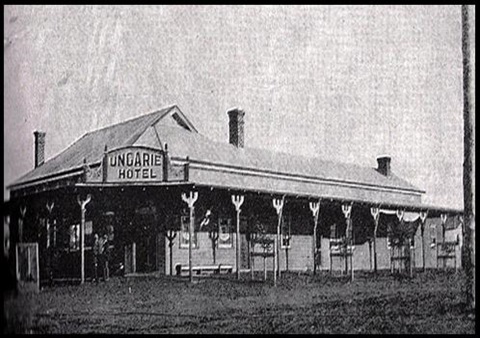Ungarie Heritage Walk

Click hear to access the Ungarie Heritage Tour
Stretch your legs and learn about Ungarie's history from when the town was gazetted as a village in 1894 to its days of growth through the first half of the 20th century.
Cross the Humbug Creek to Ungarie Central School where the primary students have prepared a tour of the history of their school from the perspective of past students.
John Oxley, explorer and NSW surveyor general, was probably the first European to cross through what is now the Ungarie district. This was part of his investigation of the Lachlan Valley area in May 1817. In describing the country he had penetrated he said: For the want of timber, grass, and water, this country will never be inhabited by civilised man. He was of course proven wrong and the land west of Bathurst soon opened up.
It was about 1852 that John Regan explored the back country of what is now West Wyalong in search of more station country. The Regans had a property east of West Wyalong called The Bland.
Soon after he continued to explore further west and came upon the creek that he called The Humbug. His group was so impressed by the land that it was taken up. A Mr Ward entered into partnership with one of Regan’s friends, a Mr Wood. They called the new run Merrigreen which consisted of 42,220 acres (170.9 km2).
After Regan’s explorations more men came to take up various stations. Wollongough was taken up by Carlo Marino around 1871, followed by the King Family in 1878 and later by 1891, the John Bros.
In 1886 Roger Freeling took up Ungarie Station. It was around about 1871 that the farming residents in the vicinity of the Humbug took up a petition for a Post Office to be established at Wollongough as they argued that the nearest post office at Marsden was too far away, 81 kilometres.
Once the post office was established a small settlement began to grow. After a Postmaster was appointed the Post Office was known as Wollongough. This caused a lot of confusion in the Postal Department with the large town of Wollongong, and in 1879 was changed to Ungarie.
The old hotel was owned by Mrs Kerwin, and a portion of it, which still stands at the rear of the butcher’s shop was the dining room and was built around 1883 by Mr Tout.
By 1892 the settlement comprised a post office, a hotel, two general stores, a blacksmith shop, a butchery and a boarding house.
Even at this stage the Ungarie settlement did not have the distinction of being gazetted as a village and it was in November 1891 that application was made for Ungarie to be established as a village. A petition was submitted to the Minister of Lands, urging a survey for a village. Surveyor Roberts reported in December 1892 that a suitable site existed on the north side of Euglo or Humbug creek opposite the present day township.
In September 1893 Surveyor A. Maitland surveyed the village on this site covering an area of 250 acres (1.0 km2). This was gazetted as the village of Ungarie on 31 March 1894. By 1900 the village of Ungarie began to grow and a baker shop was added to the list of services provided in the town.
After considerable agitation from residents a new branch railway line was approved for construction from the existing terminus of West Wyalong to Ungarie and on to Lake Cargelligo. Construction commenced in 1913 with the line opening on 13 November 1917.
The new railway station was located approximately one half mile from the original village, a new village eventually grew around the new station. Nine years later work started on a new branch line from Ungarie to Naradhan to service more wheat collection sidings, this line opened on 11 February 1929.